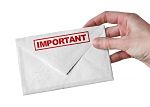|
Writing Emails
 Writing Emails is something everybody knows- right?
Writing Emails is something everybody knows- right?
But writing good emails– that‘s another story altogether.
Ofcourse, YOU already know this– but just to be sure, here‘s a list of the best tips for writing business emails.
Writing Emails: What You need to Know
- Subject Line:
- Have a subject line that tells the reader what the email is about. It is a bad idea to leave the subject line blank, and equally bad to fill it with phrases that mean nothing, like Hi, or Very important, or Urgent.
- Instead of writing ‘Tomorrow‘s Deadline’ in the subject line, write, ‘Request for an extension on tomorrow‘s deadline.’
See how the second subject line clearly states what the email is about.
- To: CC:/ BCC:
When writing emails, don‘t randomly hit reply all or put everyone‘s email ID in the To: space. Send it to those who actually need to read it.
- TO: Put names of people who need to respond or act on the email.
- CC: Short for Carbon Copy. Use this to mark the email to those who only need to be informed about the email, and don‘t need to take any action.
- BCC: Short for Blank Carbon Copy. Use this when you don‘t want to disclose the identity of the people to whom you are sending the email. The names in TO: and CC: are visible to everybody, but BCC: names are not visible.
For example, if you want to send a letter of warning and you don‘t want to make the names public, you can put them in BCC.
- Addressing Business Emails:
Some common ways of addressing people when writing emails are:
- Use a Mr. + Last name for a man– Dear Mr. Smith:
- Use a Ms. + Last name for a woman– Dear Ms. Smith:
- However, some women prefer to be addressed as Mrs. or Miss. If you know that how the lady likes to be addressed, use that. Otherwise, use Ms.
- Use a Dear + Full Name if you are not sure if you are writing to a man -Dear Thanh Ngo:
- Use a Dear + First name if you share an informal relationship with the person to whom you are sending the email–
- You can either put a colon at the end of the salutation, or you can use no punctuation. For example, both Dear Mr. Smith: or Dear Mr. Smith are correct.
- If writing business emails to someone who you know well, put a comma at the end of the salutation. For example, Dear Jack,
- Write your full name correctly in the From: line.
- When writing business emails, put your full name in the From: line. Getting an email from Jane Wang looks more professional than getting it from wang65@go.com.
- When you write your full name, capitalize the first and last names.So,
Jane wang– WRONG
JANE WANG– WRONG
Jane Wang– Right
- Include the main points in the beginning of the email.
- List the most important points in the beginning, and then follow it up with other details.
- This way, even if someone just reads the beginning of the email, they will know what it is about.
- Keep the body short, and have a clear message.
- If you need to scroll to read your business email, then it‘s probably too long.
- Keep it short and to the point. Your reader should be able to tell exactly what you want out of him or her.
- Avoid too many open-ended questions.
- Writing emails is about saving time. Send close-ended questions when possible will cut down on the back-and-forth time.
- For example, imagine writing this in a business email sent to 5 people:
Please suggest a convenient day for a meeting.
Just imagine see the number of emails that will go back and forth before this is resolved.
A better way is to suggest something definitive, and then see if it works for everyone. For example, you can write,
Is Tuesday a good day for everyone for a meeting?
- Don‘t write confidential information or passwords in an email.
- Emails can always be intercepted, or recovered by the IT department in your company.
- Never include confidential information or passwords when writing emails, business or personal.
- What is the right way to format an email?
You can use either HTML or plain text. However, using plain formatting is better. Here‘s why:
- HTML: You get more attractive formatting, but the disadvantage is that it may not open properly in the recipient‘s computer, so it may not be readable.
- Plain Text: The formatting is plain, but the advantage is that your email will not get distorted.
- Closing the email with a signoff:
- When writing a business letter, we end with a complimentary close like Yours sincerely or Yours truly.
- Similarly, we need to use a signoff when writing business emails. Some common signoffs that you can use include:
Regards
Sincerely
Cheers
Best
- If you have put a colon at the end of your salutation, put a comma at the end of signoff. But if you have not used any punctuation in the salutation, you don‘t need to put any in the signoff. For example, you can write
Dear Mr. Smith:
Regards,
OR
Dear Mr. Smith
Regards
- Include your Signature Block when writing emails:
- In a business letter, there is a sender‘s signature block at the end that includes the sender‘s name, designation, and signature. Similarly, you should put a signature block when writing business emails.
- Signature blocks in an email are a great way to advertise your business. However, they should not go beyond 5 or 6 lines.
- Some of the things you can put in an email signature block include:
Your name
Designation
Company‘s name
Telephone numbers
Email ID
Company‘s website addresses
Confidentiality clauses
Terms and Conditions
- Attachments:
Attachments take up unnecessary space, and people may not even have the software to open them.
- A basic rule when writing emails is- Don‘t send attachments in a business email unless requested.
- If you need to send something, it‘s best to copy and paste it directly in the body of the email.
- And if you absolutely need to attach a heavy file with a business email, ask the recipients if you can send it, and also if they have the software required to open it.
- Make the business email easy to read.
Here are some tips on writing emails that are easily readable:
- Write in points, and use bullet for emphasis.
- Use short paragraphs, ideally not more than 3-4 sentences long.
- Write in active voice.
- Proofread before sending business emails.
- Grammatical mistakes, spelling errors, incorrect punctuation all reflect poorly on your email writing skills.
- Make sure you check your business email for any errors before you click ‘Send’.
Must Read:
Email Writing
10 most common mistakes in Email Writing. Do you also make them?
Business Email Etiquette
Proper Business Email Etiquette for Writing a perfect Business Email.
Complaint Letters
How to Write a Complaint Letter
A guide on writing complaint letters that help you get the desired action.
Complaint Letter Template
A professional complaint letter template for a faulty product/service.
Sample Complaint Letter
You can never annoy someone into doing what you want them to do. Here's a sample of a business complaint letter that gets the point across, and still manages to be nice!
Thank You Letters
Writing Business Thank You Letters
Learn how to write effective thank you letters.
Interview Thank You Letter Template
What to include and the points to mention when writing an interview thank you letter.
Thank You Letter For Interview - Sample
Interview thank you letters are a great way to create a post-interview sales pitch for yourself. Use this free sample business thank you letter as a guide .
Promotion Letters
Writing a Promotion Letter
Find out what information you need to include when writing a promotion letter.
Sample Promotion Letter
Need to write a promotion letter? Use this free sample promotion letter as a guide.
Further Reading:
Writing a Business Letter
A step-by-step guide for writing that perfect business letter.
Proper Business Letter Format
A complete guide on the business letter format.
Return from Writing Emails Business Letter Guru Homepage
|
Welcome to Business Letter Guru!

Most Popular
Sample Job Promotion Letter
Writing a Job Promotion Letter
How to Write a Complaint Letter
Complaint Letter Template
Writing a Business Letter
|

 Writing Emails is something everybody knows- right?
Writing Emails is something everybody knows- right? 

 Are YOU the Guru of Business Letters?
Are YOU the Guru of Business Letters?




